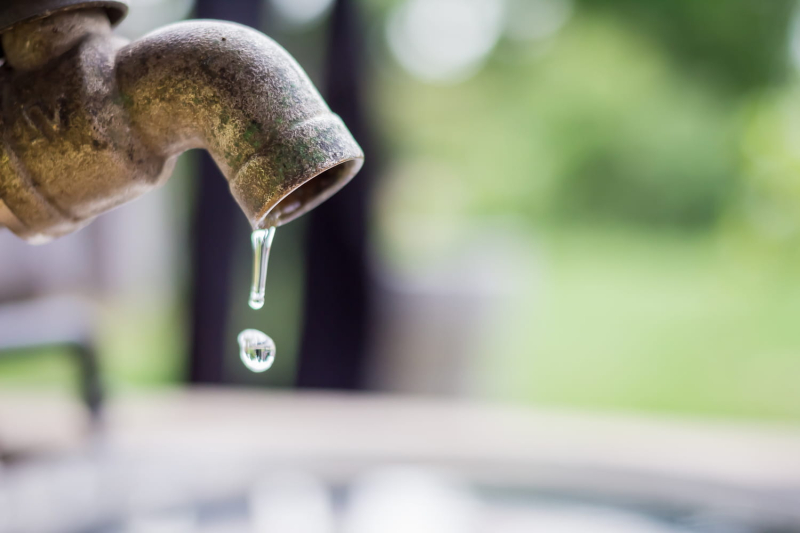According to the latest report from Intercommunalités de France, 198 communities have a leak rate of at least 50%. A scourge as global warming gains ground. This Wednesday, March 20, 2024, Intercommunalités de France publishes a map listing 198 black spots. In other words, the 198 communities which have at least one water service with a rate of return lower than 50%, meaning that more than half of the total Of the drinking water from this network is lost in nature. The association used the most recent data from the National Observatory of Water and Sanitation Services from 2022 to achieve this verdict. And the results are overwhelming: in 2022, more than 1,000 municipalities will have had tap supply difficulties and 20% of the total population will be affected. of drinking water in France is lost during its transportation. "Among these 198 black spots, 151 water services are under isolated municipal management. Several water services can coexist within an intercommunity or a union. When intermunicipality appears on the map, it is never all of its services which have an efficiency of less than 50%, but generally a few municipalities can we read on the file. Generally speaking, the rate of return of the network of services of less than 3 500  The population is 74.4%, or 7.4% points below the national average, according to a BDO and FP2E 2023 study. in deçà expectations. Voilaà why, one of the fundamental issues of water management could reside in the transfer to intercommunality. This could in particular make it possible to strengthen the programming of investments with a view to reducing leaks. "There is a real awareness of the need for security for the "too much" #39;water" but also "not enough water". This is the common thread of all our public policies: we brought all the users together around the table so that people talk to each other and so that we can have a territorial project that meets the standards. of our issues" indicates Régis Banquet, president of Carcassonne Agglomération. The observation is overwhelming for certain territories, particularly the smallest. The village of Astet in Ardèche, 40 inhabitants, occupies the first and sad place in the ranking of municipalities with the highest level of leaks in France m& Metropolitan: 91%. In the mountains, the networks are the most extensive and the most prone to leaks. Among the most affected departments are the Pyrenees-Orientales, the Hautes-Alpes and the Vosges. Cities like Scionzier (Haute-Savoie) with 9,000 inhabitants or Contes (Alpes-Maritimes) with 7,500 inhabitants which is part of a union of fifteen municipalities around Nice and are also particularly affected. This therefore does not only concern small, isolated villages. According to the French sector, 6.5 billion euros are invested each year. A colossal amount? Perhaps, the fact is that it would take 15 more over 5 years to catch up #39;investment" explains Intercommunality. Dizzying figures which must constantly be associated with other factors in the worsening need for investment. Strengthening requirements for quality of drinking water and for the treatment of wastewater or to secure the supply of drinking water in the face of drought. Two investment needs which are "not quantified" specifies the file. "Redoing the pipes over 1km, it is 1 million, çitûa very expensive" continues Régis Banquet in the columns of Lib&eac;ration. "The pipes must be renewed every fifty years so that they are in good condition, but we only renew them every 120 years. 140 years old. The awareness that attention must be paid to every drop of water is recent" he concludes. "Small towns are in difficulty. We must regroup and pool to reach a critical size to meet the challenges. In many cases, the intercommunal scale is coherent but in others, another territorial division may be necessary. advises Régis Taisne, head of the "water cycle" &agrav; the National Federation of Granting and Governing Communities (FNCCR), still in Lib&eac;ration. The latter gives the examples of Vendée and Alsace-Moselle, which have large water unions. Please note, mutualist management does not always rhyme with guaranteed protection. The metropolis of Perpignan, made up of 36 municipalities, has for example a total of 60% leaks.
More weight for intercommunality ?
Smallest municipalities hard hit
Costly investments
